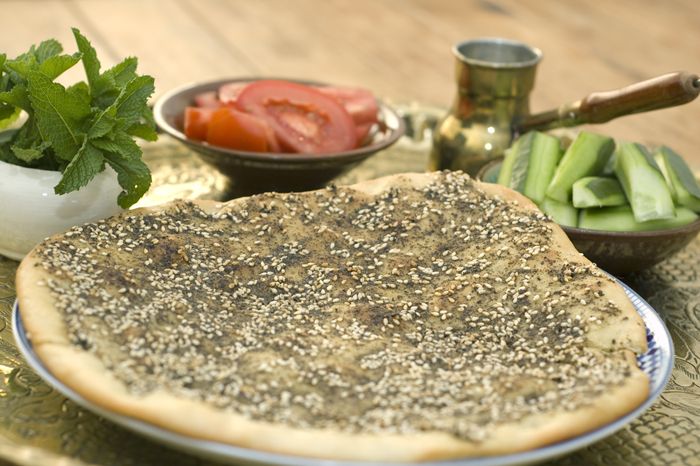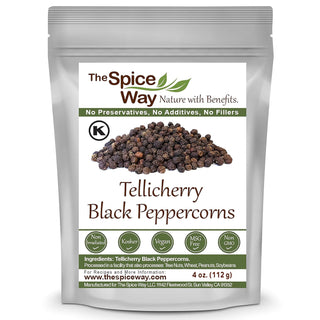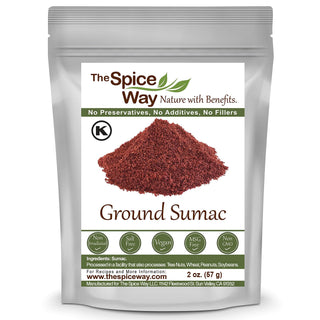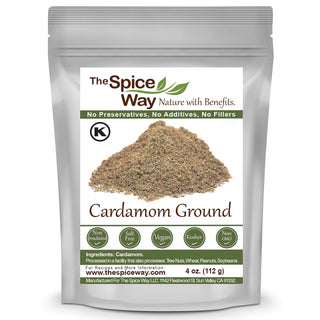Lebanese Zaatar is more than just a spice mix—it's a cultural icon and a taste of tradition passed down through generations. This aromatic, tangy, and earthy blend is a staple in Lebanese kitchens and across the Levantine region. Whether sprinkled over warm flatbreads, mixed with olive oil as a dip, or used to season meats and vegetables, Zaatar offers a burst of nutritious and comforting flavor.
In this blog, we’ll explore what makes Zaatar so special, its health benefits, and most importantly, how you can make authentic Lebanese Zaatar at home.
What Is Zaatar?
Zaatar (sometimes spelled za'atar or zahtar) is both the name of a wild herb (Origanum syriacum) native to the Middle East and the name of a spice blend that features the dried herb as a key ingredient. Lebanese Zaatar typically includes:
-
Dried Zaatar (or substitute with thyme/oregano if unavailable)
-
Salt
Each family may have its twist—some add marjoram, others incorporate caraway or cumin—but the foundation remains bold, earthy, and slightly tart.
Why Make Your Zaatar?
While store-bought Zaatar is widely available, making your own allows you to:
-
Control the ingredients and avoid additives or preservatives
-
Adjust the flavor profile to suit your palate (more tang, less salt, etc.)
-
Use fresher spices, leading to better taste and aroma.
Ingredients for Lebanese Zaatar
Here’s a basic and authentic recipe:
Ingredients:
-
1/4 cup dried thyme (or traditional zaatar herb if you can source it)
-
2 tablespoons ground sumac
-
2 tablespoons toasted sesame seeds
-
1 teaspoon salt
Optional:
-
1 teaspoon dried oregano
-
1/2 teaspoon ground cumin or marjoram (for added depth)
Step-by-Step Instructions
1. Toast the Sesame Seeds
Place the sesame seeds in a dry skillet over medium heat. Stir constantly until they turn golden brown and aromatic (about 3–5 minutes). Remove from the heat and let them cool.
2. Grind the Thyme (if needed)
If using whole dried thyme leaves, crush them using a mortar and pestle or a spice grinder. You want a coarse powder—nothing too satisfactory.
3. Mix All Ingredients
Combine the ground thyme, sumac, cooled sesame seeds, and salt in a bowl. If using any optional herbs like oregano or cumin, add them now.
4. Store Properly
Transfer the mix into an airtight container and store it in a cool, dark place. It will stay fresh for up to 6 months, but try to use it within 3 months. for the best flavor
How to Use Zaatar
Lebanese Zaatar is incredibly versatile. Here are some popular ways to enjoy it:
-
Zaatar and Olive Oil Dip: Mix with extra virgin olive oil and dip with warm pita or flatbread.
-
Zaatar Man’ousheh: A Lebanese flatbread topped with Zaatar and olive oil, baked until crisp.
-
Sprinkled: Sprinkled on Roasted Vegetables or Grilled Meats
-
Topping: Topping for Hummus or Labneh
-
Seasoning: Seasoning for Popcorn or Homemade Crackers
Health Benefits of Zaatar
Zaatar isn’t just tasty—it’s good for you too! Here are some of the potential health perks:
-
Rich in antioxidants (especially from sumac and thyme)
-
Anti-inflammatory properties
-
Digestive aid
-
High in healthy fats when mixed with olive oil
-
Brain-boosting compounds (thyme and oregano have been associated with improved cognitive performance in some studies)
Variations of Lebanese Zaatar
While the basic recipe for Lebanese Zaatar is pretty standard, there are many regional and personal variations. Different areas of the Levant use slightly different proportions or ingredients. Here are a few creative twists to try:
1. Sweet Zaatar
In some regions, Zaatar is combined with sugar or honey to create a sweet version. This variation is often enjoyed on bread, served alongside a cup of tea, or sprinkled on yogurt for a delightful sweet-and-savory snack.
2. Spicy Zaatar
For those who like a bit of heat, you can add chili flakes or cayenne pepper to the mix. This variation gives the spice blend a more intense flavor profile that pairs well with meats and grilled vegetables.
3. Citrus Zaatar
Add a twist of lemon zest or orange zest to the mix for a bright, refreshing note. This is especially good when used as a topping fish or poultry dishes.
4. Herb-infused Zaatar
If you’re feeling adventurous, experiment with other dried herbs. Marjoram, oregano, or even lavender can add unique floral or herbal notes to the traditional Zaatar blend. This variation works beautifully when making Mediterranean-style grilled meats or roasted vegetables.
How to Pair Zaatar with Other Lebanese Dishes?
Zaatar is a perfect companion to meat and Middle Eastern dishes. Here are some ideas on how to incorporate it into your meals:
1. Lebanese Mezze
Zaatar is often a key component of a Lebanese mezze spread. Serve it alongside hummus, baba ghanoush, muhammara, and tabbouleh for a delightful variety of textures and flavors. You can also serve Zaatar on freshly baked pita bread or as a topping for labneh (strained yogurt).
2. Grilled Halloumi Cheese with Zaatar
Halloumi, a brined cheese with a high melting point, is often grilled or fried. For a savory and aromatic flavor boost, drizzle olive oil over grilled halloumi and sprinkle generously with Zaatar. Serve it as an appetizer or part of a larger meal.
3. Za’atar Roasted Potatoes
One of the easiest and most flavorful ways to use Zaatar is by seasoning potatoes with it. Simply toss diced potatoes in olive oil, sprinkle generously with Zaatar, and roast until golden. The result is crispy, flavorful potatoes that will be the perfect side dish to any meal.
4. Zaatar Chicken
Marinate chicken in olive oil, lemon juice, garlic, and Zaatar for a quick and delicious main dish. Roast or grill the chicken until golden and tender. This simple dish is flavorful and pairs well with rice, couscous, or a fresh salad.
Conclusion
Making your own Lebanese Zaatar is an easy way to introduce a new layer of flavor into your cooking. This fragrant, tangy, and savory spice blend has been a beloved part of Lebanese cuisine for centuries and continues to win over food lovers worldwide. Whether you use it in traditional dishes like manakish or experiment with new ideas like Zaatar pesto or avocado toast, Zaatar is guaranteed to add something special to your meals.
So next time you're looking for a unique flavor boost, reach for a jar of homemade Zaatar—you’ll be bringing the essence of the Levant into your kitchen with every bite.
FAQS
1. What is Zaatar, and what are its main ingredients?
Zaatar is a traditional Middle Eastern spice blend of dried thyme, sumac, and toasted sesame seeds. Salt is typically added; some variations may include oregano, marjoram, or cumin for extra flavor. This mix offers a tangy, herbal, slightly nutty taste that enhances various dishes.
2. How do I use Zaatar in cooking?
Zaatar is incredibly versatile and can be sprinkled over flatbreads, used as a seasoning for meats and vegetables, or mixed with olive oil to create a dip. It’s also commonly used in Mediterranean and Middle Eastern dishes like manakish (Lebanese flatbread), roasted potatoes, and chicken marinades.
3. Can I make Zaatar at home?
Yes, making Zaatar at home is easy! Mix dried thyme (or oregano), ground sumac, toasted sesame seeds, and salt. You can also experiment by adding herbs or spices like marjoram or cumin for a personalized touch. It’s a simple and flavorful way to enjoy this iconic blend fresh.
4. How should I store homemade Zaatar?
Store homemade Zaatar in an airtight container in a cool, dark place to maintain its flavor and aroma. For maximum freshness, it’s best used within 3-6 months. You can also refrigerate it for a longer shelf life, but ensure the container is tightly sealed to avoid moisture.
5. What are the health benefits of Zaatar?
Zaatar is packed with antioxidants, particularly from sumac and thyme, which can help reduce inflammation and support digestive health. The blend is also rich in healthy fats from sesame seeds and olive oil, making it a nutritious addition to your meals while offering unique flavor and aroma.







